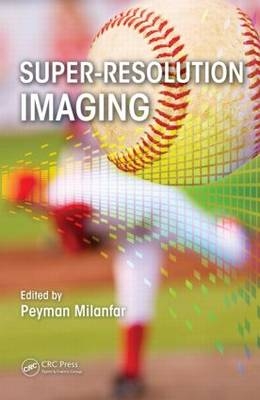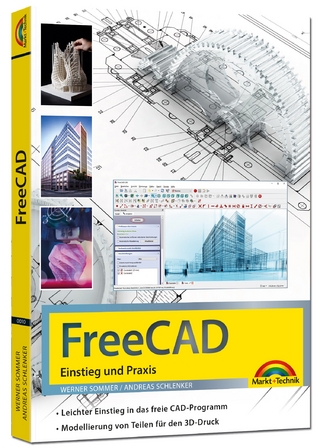
Super-Resolution Imaging
Crc Press Inc (Verlag)
978-1-4398-1930-2 (ISBN)
With the exponential increase in computing power and broad proliferation of digital cameras, super-resolution imaging is poised to become the next "killer app." The growing interest in this technology has manifested itself in an explosion of literature on the subject. Super-Resolution Imaging consolidates key recent research contributions from eminent scholars and practitioners in this area and serves as a starting point for exploration into the state of the art in the field. It describes the latest in both theoretical and practical aspects of direct relevance to academia and industry, providing a base of understanding for future progress.
Features downloadable tools to supplement material found in the book
Recent advances in camera sensor technology have led to an increasingly larger number of pixels being crammed into ever-smaller spaces. This has resulted in an overall decline in the visual quality of recorded content, necessitating improvement of images through the use of post-processing. Providing a snapshot of the cutting edge in super-resolution imaging, this book focuses on methods and techniques to improve images and video beyond the capabilities of the sensors that acquired them. It covers:
History and future directions of super-resolution imaging
Locally adaptive processing methods versus globally optimal methods
Modern techniques for motion estimation
How to integrate robustness
Bayesian statistical approaches
Learning-based methods
Applications in remote sensing and medicine
Practical implementations and commercial products based on super-resolution
The book concludes by concentrating on multidisciplinary applications of super-resolution for a variety of fields. It covers a wide range of super-resolution imaging implementation techniques, including variational, feature-based, multi-channel, learning-based, locally adaptive, and nonparametric methods. This versatile book can be used as the basis for short courses for engineers and scientists, or as part of graduate-level courses in image processing.
Peyman Milanfar is Professor of Electrical Engineering at the University of California, Santa Cruz. He received a B.S. degree in Electrical Engineering/Mathematics from the University of California, Berkeley, and the Ph.D. degree in Electrical Engineering from the Massachusetts Institute of Technology. Prior to coming to UCSC, he was at SRI (formerly Stanford Research Institute) and served as a Consulting Professor of computer science at Stanford. In 2005 he founded MotionDSP, Inc., to bring state-of-art video enhancement technology to consumer and forensic markets. He is a Fellow of the IEEE for contributions to Inverse Problems and Super-resolution in Imaging.
Image Super-Resolution: Historical Overview and Future Challenges. Super-Resolution Using Adaptive Wiener Filters. Locally Adaptive Kernel Regression for Space-Time Super-Resolution. Super-Resolution With Probabilistic Motion Estimation. Spatially Adaptive Filtering as Regularization in Inverse Imaging. Registration for Super-Resolution. Towards Super-Resolution in the Presence of Spatially Varying Blur. Toward Robust Reconstruction-Based Super-Resolution. Multi-Frame Super-Resolution from a Bayesian Perspective. Variational Bayesian Super Resolution Reconstruction. Pattern Recognition Techniques for Image Super-Resolution. Super-Resolution Reconstruction of Multi-Channel Images. New Applications of Super-Resolution in Medical Imaging. Practicing Super-Resolution: What Have We Learned?
| Erscheint lt. Verlag | 29.10.2010 |
|---|---|
| Reihe/Serie | Digital Imaging and Computer Vision |
| Zusatzinfo | 13 Tables, black and white; 163 Illustrations, black and white |
| Verlagsort | Bosa Roca |
| Sprache | englisch |
| Maße | 156 x 234 mm |
| Gewicht | 839 g |
| Themenwelt | Informatik ► Grafik / Design ► Digitale Bildverarbeitung |
| Naturwissenschaften ► Physik / Astronomie ► Optik | |
| Technik ► Elektrotechnik / Energietechnik | |
| Technik ► Umwelttechnik / Biotechnologie | |
| ISBN-10 | 1-4398-1930-0 / 1439819300 |
| ISBN-13 | 978-1-4398-1930-2 / 9781439819302 |
| Zustand | Neuware |
| Informationen gemäß Produktsicherheitsverordnung (GPSR) | |
| Haben Sie eine Frage zum Produkt? |
aus dem Bereich


